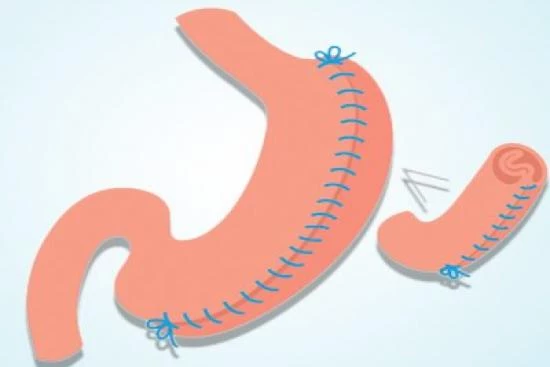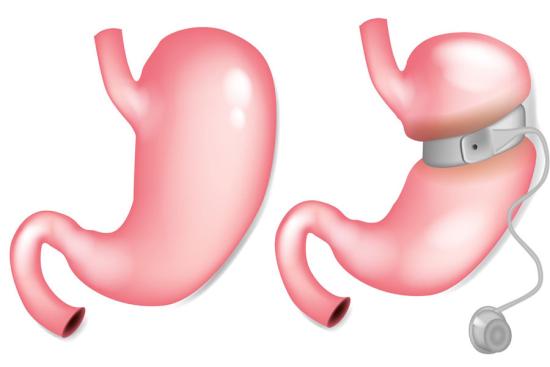Say goodbye to yo-yo dieting! Endo-sleeve, or endoscopic gastric banding, is a minimally invasive alternative to traditional bariatric surgery. By significantly reducing the capacity of your stomach, this technique helps you feel fuller faster and eat less. Unlike traditional surgery, the Endo-sleeve is reversible, has fewer risks, and leaves no visible scars.
- People with a BMI between 30 and 40.
- People who want to undergo a less invasive, non-surgical bariatric surgery.
- Gastric band surgery.
- Sleeve gastrectomy.
About 1 hour.
- 1 to 3 days of hospitalization.
- Work stoppage for up to 3 weeks.
- 90%.
Price of Endoscopic Gastric Banding in Turkey
As an innovative treatment, endoscopic gastric banding has generated considerable interest and enthusiasm among bariatric surgery specialists in Turkey.
Turquie Santé guarantees the most competitive and discounted prices for your endoscopic gastric banding procedure at our partner clinics in Istanbul, Turkey.
Several fees may be included in the total cost of endoscopic gastric banding, such as:
- The hospital or clinic fees.
- The cost of pre-surgical tests.
- The cost of anesthesia.
- The surgeon's fees.
Best Clinics with Verified Reviews

- Multispecialized hospital
- 7 operating rooms
- Capacity é of 170 beds

- Multispecialized hospital
- Hospital founded in 2007
- Very good reputation in ENT department
Endo-Sleeve (Endoscopic gastric plication): What is it?
Endoscopic gastric plication (EGP) or Endo-Sleeve is a medical weight loss procedure performed endoscopically. This innovative procedure aims to reduce the volume of the stomach, with an effect similar to that of sleeve gastrectomy.
The technique is also useful as a revision procedure for bariatric surgery. It is particularly indicated when patients who have undergone major bariatric surgery experience a gradual regain of gastric capacity, compromising the initial results in terms of weight loss and satiety.
Endoscopic gastric banding may be considered in cases of inadequate weight loss after gastric banding, or in cases of dilatation of the stomach after sleeve gastrectomy or of the upper gastric pouch after vertical gastroplasty.

Endoscopic gastric plication procedure
Performed under general anesthesia, the Endo-sleeve procedure is performed endoscopically, without a surgical incision. Using a gastroscope passed through the mouth, sutures are placed along the greater curvature of the stomach, creating a narrower stomach "tube". This volume reduction induces a faster, longer-lasting feeling of fullness, promoting significant and lasting weight loss.
While results are generally long-lasting, it's important to note that long-term success depends on rigorous medical follow-up and the adoption of a healthy lifestyle.
To learn more about endoscopic gastric banding and to assess whether this technique is right for you, please do not hesitate to schedule an appointment with our bariatric surgery specialists in Turkey.

Who is the Endo-Sleeve for?
Endo-sleeve, a reversible and repeatable procedure, is specifically designed for adults over the age of 18 with:
- A body mass index (BMI) greater than or equal to 30 associated with comorbidities.
- Repeated failure with diet and exercise.
- Contraindications for traditional bariatric surgery.
With the Endo Sleeve, you can return to a healthy weight and significantly improve your quality of life.
To optimize the results of this procedure, personalized support is essential. This includes
- Rebalancing your diet to establish new, sustainable eating habits.
- Regular physical activity to reinforce the benefits of the surgery.
Together, we can design a personalized program to help you achieve and maintain your weight loss goals.
Endoscopic gastric banding: a minimally invasive approach to consider
Endoscopic gastric banding techniques offer a less invasive alternative to traditional bariatric surgery, with significant benefits for patients:
- Increased safety: By avoiding surgical incisions, the risk of post-operative complications such as fistulas and peritonitis is significantly reduced.
- Faster recovery: The absence of incisions means a faster, less painful recovery.
- Aesthetically preserved: No visible scars on the abdomen, meeting the aesthetic expectations of many patients, especially women.
- Personalized follow-up: Strict medical supervision is provided throughout the patient's journey, guaranteeing lasting results.
- Permanent solution: The anatomical modification of the stomach is permanent, but in no way alters normal digestive function.
Thanks to a multidisciplinary approach and personalized post-operative care, endoscopic gastric banding offers a safe, effective and aesthetic solution for the treatment of obesity.
Possible post-operative complications after endo-sleeve
Although minimally invasive, endoscopic gastric banding can occasionally lead to minor complications. These often involve symptoms of food intolerance (nausea, vomiting) or secondary to the procedure (ulcers, bleeding, gastric perforation).
In Turkey, endoscopic gastric banding is performed under optimal safety conditions. So, should any adverse effects occur, generally benign and of short duration, they are closely monitored by the medical team. As part of our personalized follow-up program, we ensure that each patient receives optimum support throughout his or her treatment.
Share this page






